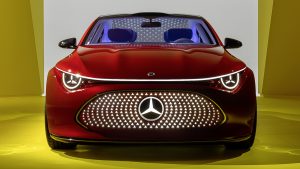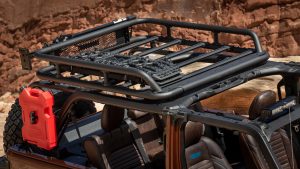Spanish brand is thriving thanks to its electric performance wrapped in sensual design. However, that is happening at the expense of the survival of Cupra’s parent brand, SEAT
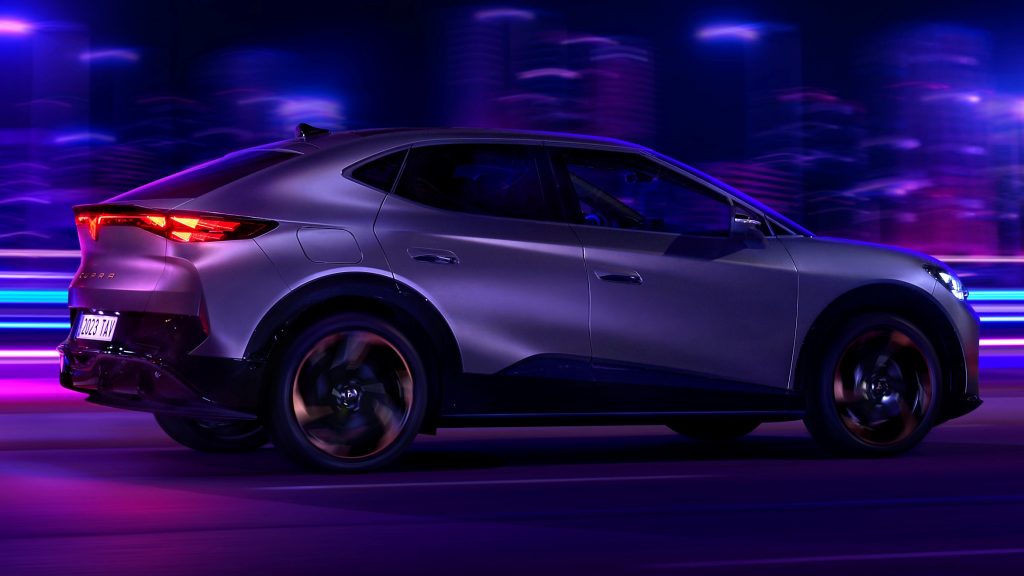
Yes, that is another SUV entering the market. And yes, it follows the latest trend within the segment: it is a coupé SUV. However, you should also know that it is a Cupra car. Have you heard of it? This is a Spanish brand which used to be a performance label on SEAT cars. It has gradually gained space inside the parent brand and now enjoys the status of an independent division. But that description is not enough for it.
Citroën once went through this process with DS, Mercedes-Benz more recently with AMG, and Fiat is now doing the same with Abarth. However, all those cases occurred more smoothly. Cupra’s strategy has been gaining traction quite fast in the market; it is building itself a full line of successful cars. While that result is amazing on its own, it comes with a tricky problem to solve: what will be left of its parent brand, SEAT?

The first Cupra cars
SEAT used to have a strong presence in motorsport. It founded a Special Vehicles Department in 1971 and competed in rally and tourism categories. In the former, it won eleven titles between 1979 and 1983. Two years later, it was renamed SEAT Sport. Cupra, in turn, emerged as the acronym of Cup Racing, but it was originally limited to urban cars. Its first product was a tuned version of the SEAT Ibiza GTI with 150 hp.
The racing team would undergo several changes over the following years, such as withdrawing from rally and starting single-brand categories. Cupra kept building its name by building more powerful versions of the Ibiza after each update of the base car, and by doing the same with the bigger brother León starting in 2001. Sedans Córdoba and Toledo had Cupra projects as well, but they never had the same reception.

Expansion towards SEAT Cupra R
Sportiness is a highly emotional attribute, so SEAT had to be careful with it. Applying the Cupra version to every single model would be expensive, because not all cars were prepared for performance powertrains. Besides, there would be no public for some of them – or would you seriously consider a sporty Alhambra? Therefore, the Spanish automaker eventually concentrated its performance brand on the Ibiza and Leon.
At first, those models would receive nice powertrain upgrades and mild visual modifications. However, the Cupra cars ended gaining prestige over time and SEAT chose to respond. The Leon Cupra was the first to receive an R version with even more power and limited production. Later, the same recipe would be used on the Ibiza as well. That initiative made SEAT the sporty and youthful branch in the Volkswagen group.
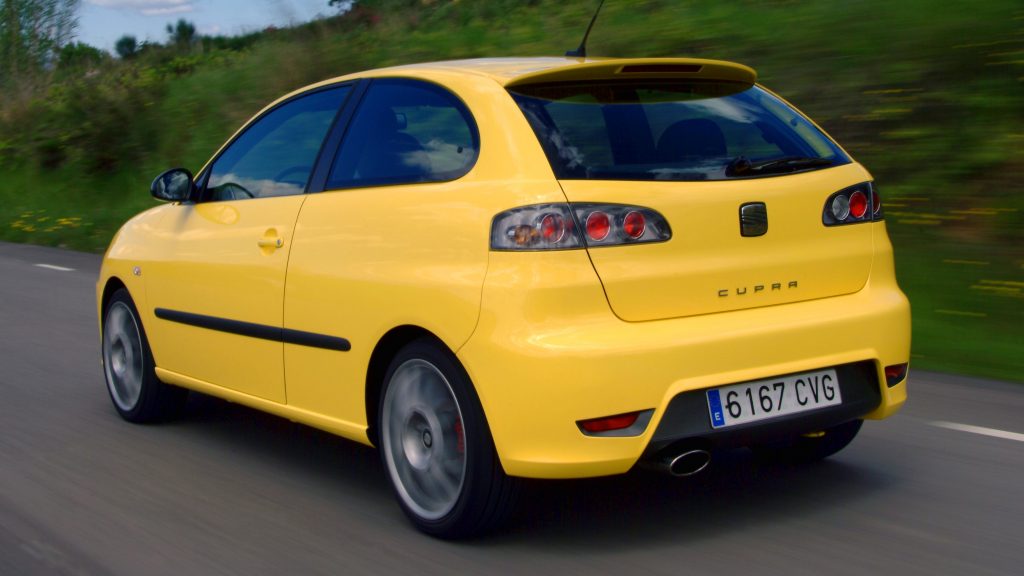
Stronger image over time
SEAT’s increasing integration with the Volkswagen group gave it better cars over time. There were all-new cars, like the Altea and the Exeo, while the existing ones became larger and more sophisticated with every new generation. Besides, the automaker’s search for efficiency made it follow the downsizing trend, using fewer engines with multiple levels of performance each. Cupra cars made sure to use that in their favor.
There was a time when SEAT would offer the FR as a mild sporty variation, the Cupra with more significant improvements, and the Cupra R with a final touch of extra power. Not to mention special versions such as the Ibiza Bocanegra, which paid tribute to the 1977 SEAT 1430‘s design. The Leon Cupra, in turn, had the K1 edition with deeper changes inspired in the racing version which SEAT used in tourism categories.
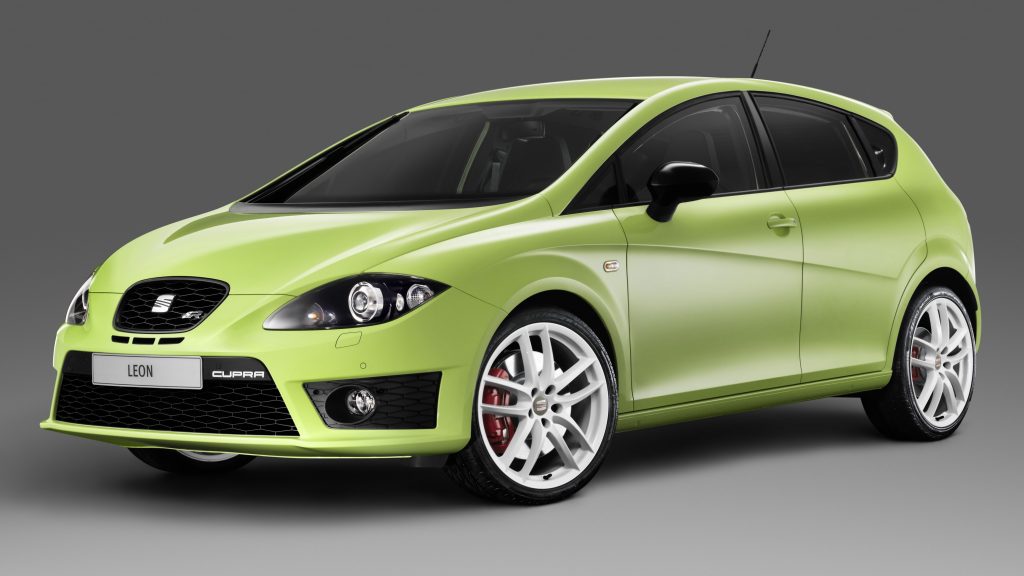
Early days of the new Cupra
So far, those cars were doing well in the market despite being merely sportier SEAT variations. The parent brand knew it had potential for more and decided to pursue it in the 2010s. The Cupra brand built itself a stronger identity with a more sinister appearance. The vehicles would use primarily darker colors, and the copper color became official in secondary uses. It appears on multiple accents and on the Cupra logo.
As you can imagine, that move came with a push towards higher profits. In 2018, SEAT elevated Cupra to the status of sub-brand starting with the Leon and its very first SUV, the Ateca. On the other hand, it also dropped its first model ever, the Ibiza – it only had a conceptual Cupra study in 2018. The goal was clear: the new brand would follow the latest trends and occupy a premium niche within the generalist market.
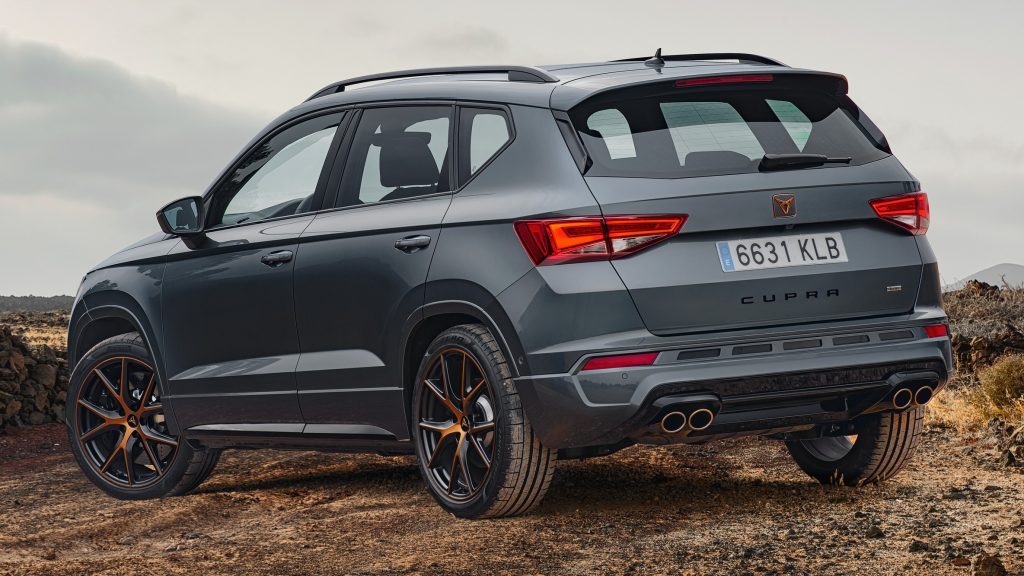
Premium version of the Spanish car
At first, the new brand looked like any other standalone brand. It replaced all SEAT logotypes with its own, changed visual details to gloss black or copper, and added exclusive colors to the palette. Not to mention that all Cupra cars had a higher standard regarding performance and equipment. However, it was obvious that it would not stop there. In 2019, the Cupra Formentor arrived to show that the venture was serious.
First of all, this model is unique in the entire VW group – not even SEAT has a badge-engineered version. Secondly, it embraced the coupé SUV trend to some extent right when it started. Last, but not least, it was the first Cupra SUV to use electrification. It quickly became the brand’s best-selling product, which helped set the tone for the upcoming years. That is when it started the offensive which is still active these days.
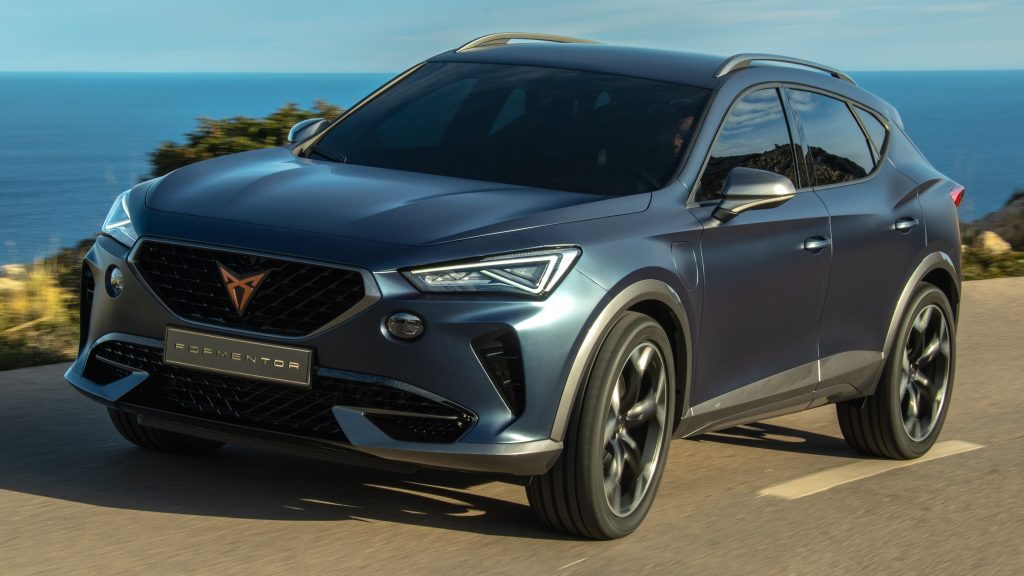
No burdens from the past
Design director Jorge Díez is enjoying the fact that Cupra is a whole new brand. SEAT and its sister brands Škoda and Volkswagen all have a history that sometimes limits what they can do. We can say that its main guideline is to be emotional. The new Cupra cars cater to people’s cravings and follow their lifestyle rather than trying to fit in a market segment or pursuing a high resale value. They are building their own niche.
We can observe that on the Born, which derives from the VW ID.3. While the basic design is the same, the Cupra identity appears on the dark accents that simulate carbon fiber, the matte paint for the body color, and the triangle-shaped head and taillights. These cars are not clearly sporty or fancy because that is not their goal. The target buyer likes them for an instinctive reason which does not need to be put in words.

Survival of the fittest
Today, the only connection left between SEAT and Cupra in terms of image is the Leon: the current model still offers a performance version from the sub-brand. Cupra’s efforts have been successfully translated to high sales, which is awesome especially because the new brand (and its market performance) still officially belongs to SEAT. However, we can observe that it is undergoing what we describe on this article’s title.
Cupra is building a strong image of its own and people are buying it. The SEAT origins are getting further and further in its history. Parallel to that, the SEAT brand no longer has the emotional branch that used to make it stand out. Since Volkswagen is carving a premium image and Škoda is focusing on practical cars, the original Spanish automaker is simply running out of competitive edges on which it can support itself.
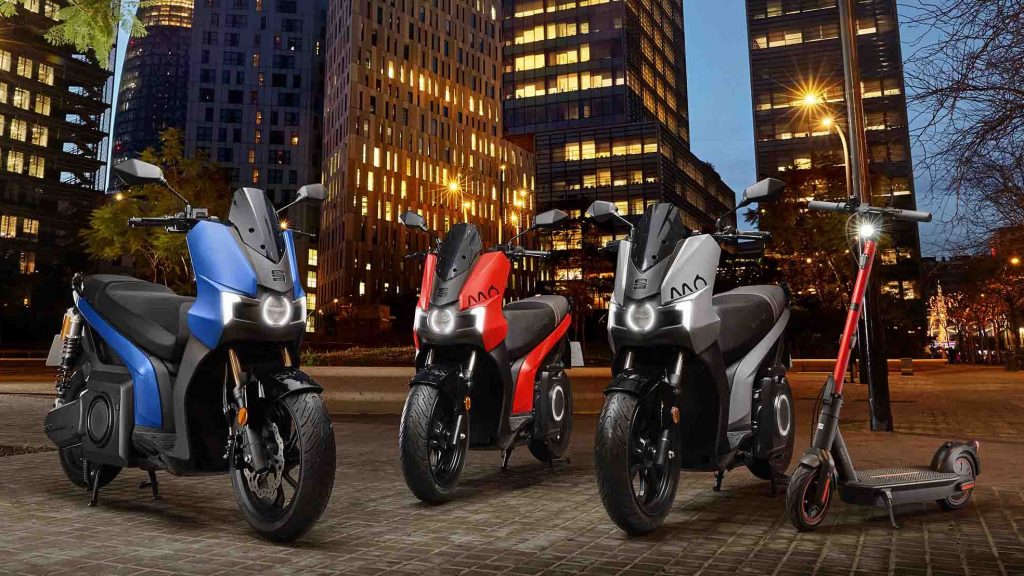
2 wheels for one, 4 for the other?
Not long ago, SEAT entered the scooter market for the first time ever. The Mó lineup now comprises four performance options, three of them from the same product. They are fully electric and customizable; you can use a phone app to manage several options including remote locking. As it turns out, the VW group is planning to make this type of vehicle SEAT’s focus from now on while Cupra keeps doing its thing.
In other words, the original Spanish automaker will specialize in micromobility. It will offer those scooters and the MiniMó microcar, which is interestingly similar to the Mobilize Duo. As of today, it already offers two sharing services for those who do not want to buy a motorcycle. There is motosharing, where you can request a few rides and only pay for their duration, or regular rental for either a few days or full months.
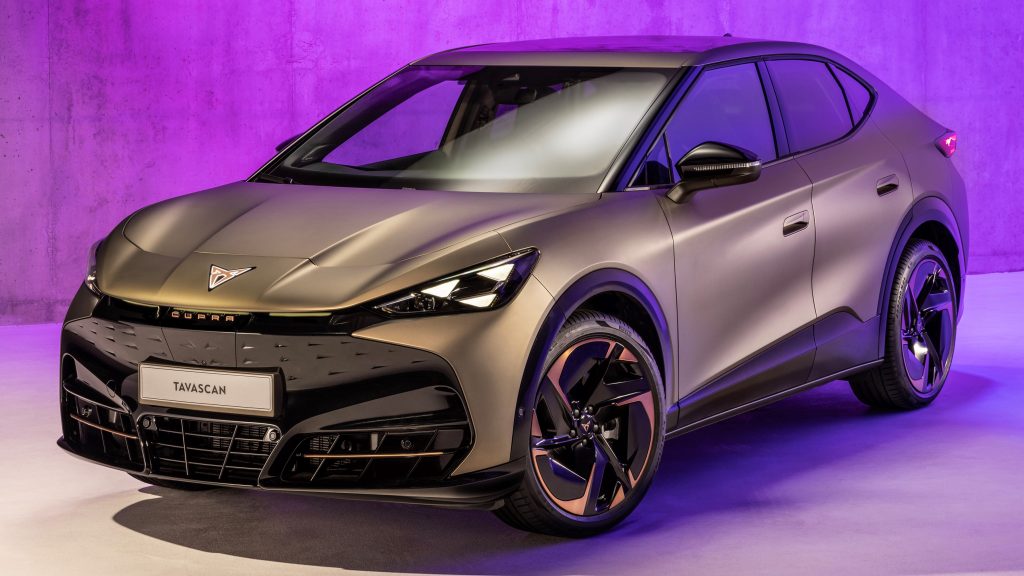
For car fans, Cupra’s prosperity has a bittersweet taste. After all, it is always great to see a car brand thrive in the market, especially such a young one. However, we cannot help but worry about SEAT; it would be a shame to let a vibrant brand and its rich history succumb to irrelevance. The Volkswagen group has made it clear that the name will not die, but we have to wait and see how exactly it is going to stay active.
Danillo Almeida has explored his passion for cars in two distinct ways. The first one is his graduation course in Mechanical Engineering, which will hopefully lead to a job position in the field. The other one is expressing his knowledge and opinions on the matter through writing. Almeida has already contributed to blogs, stores, and websites in general writing automotive content in many formats.

